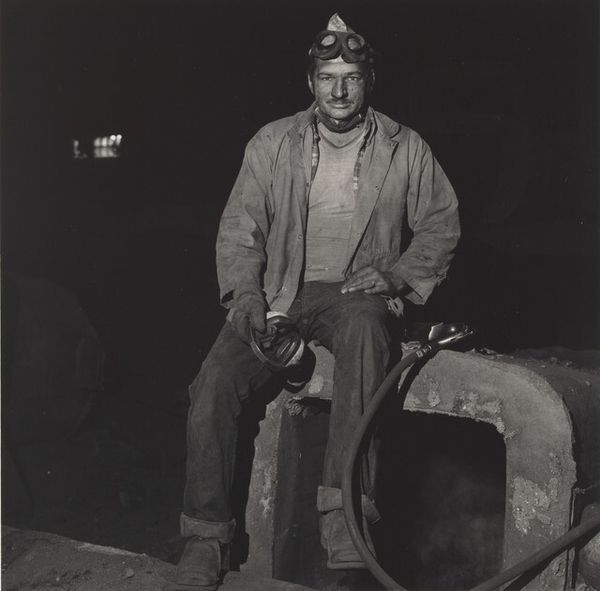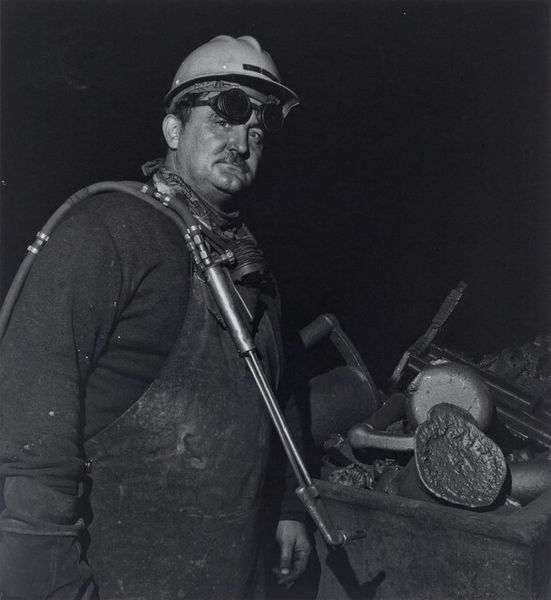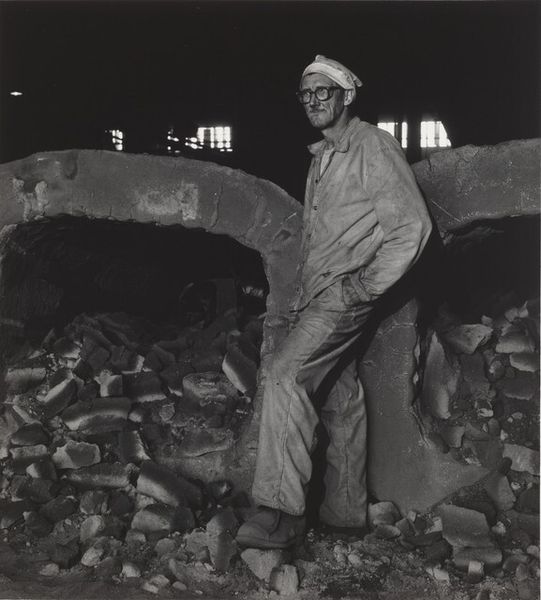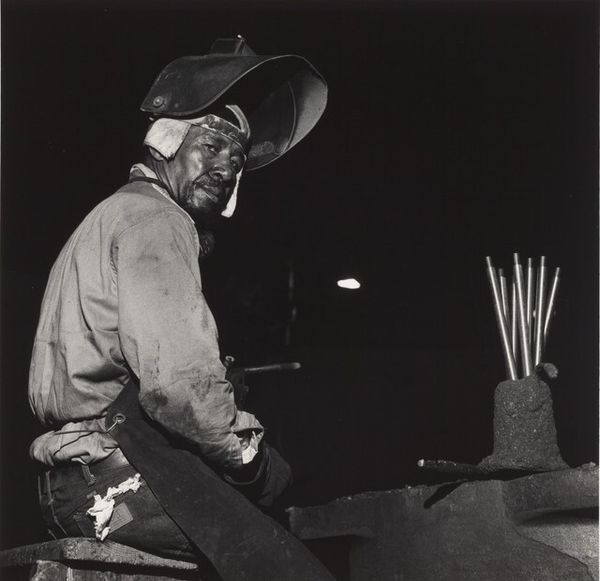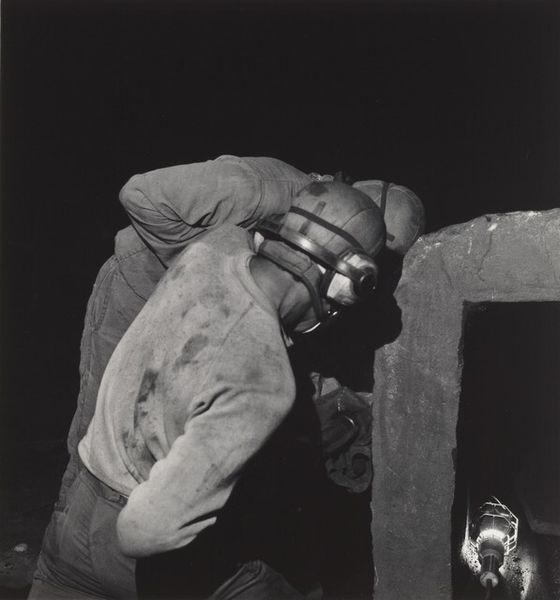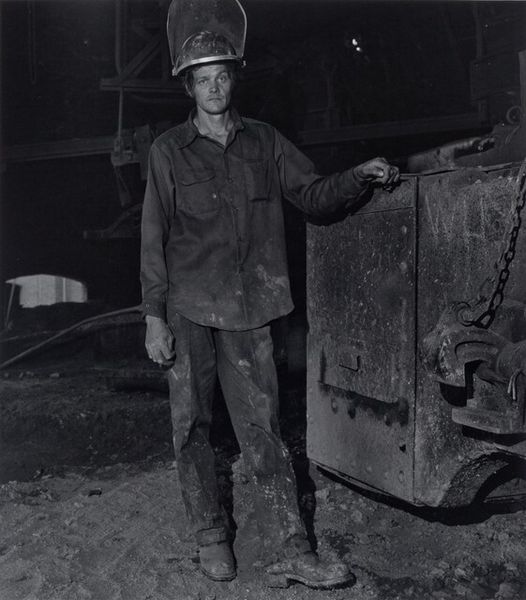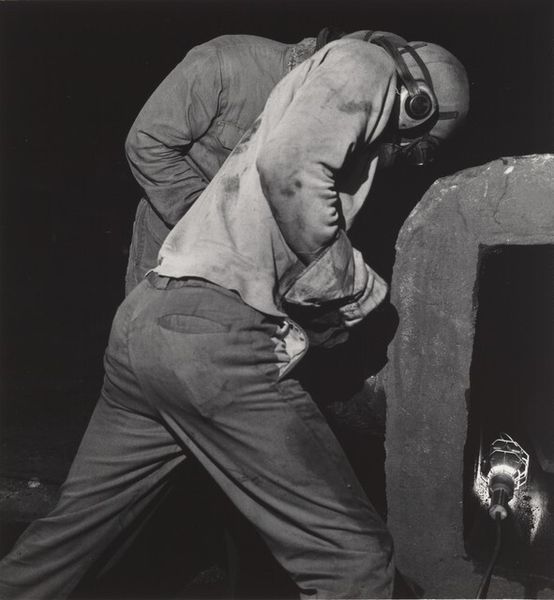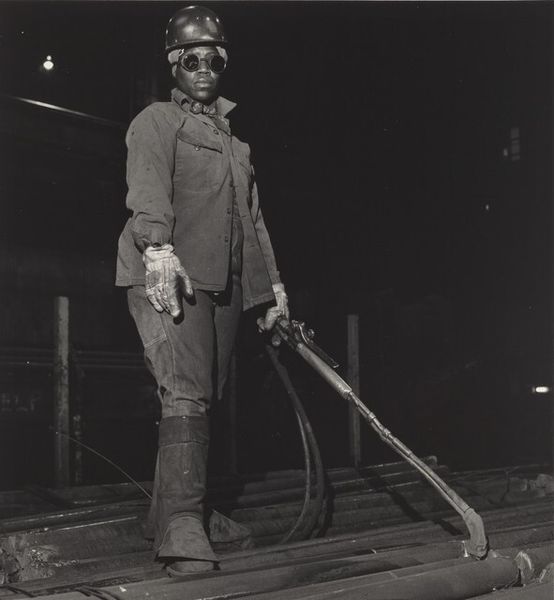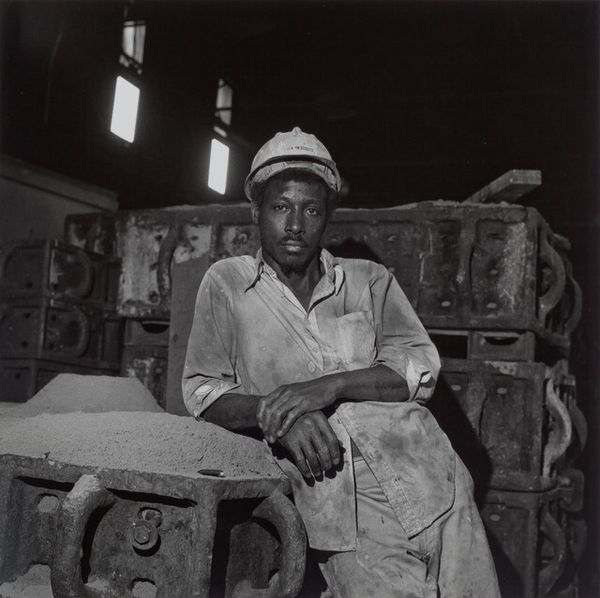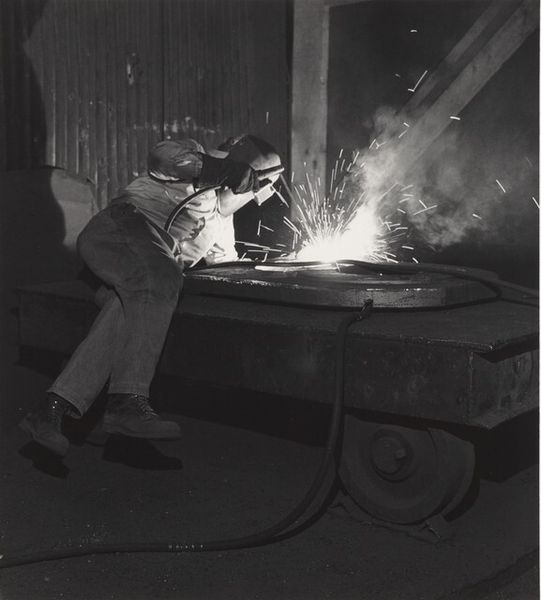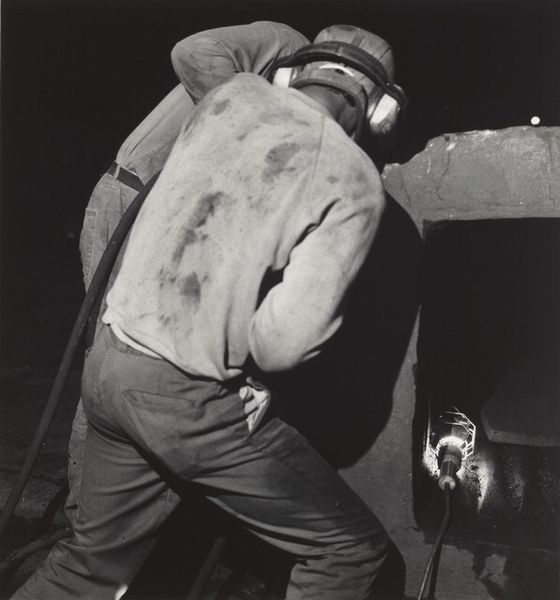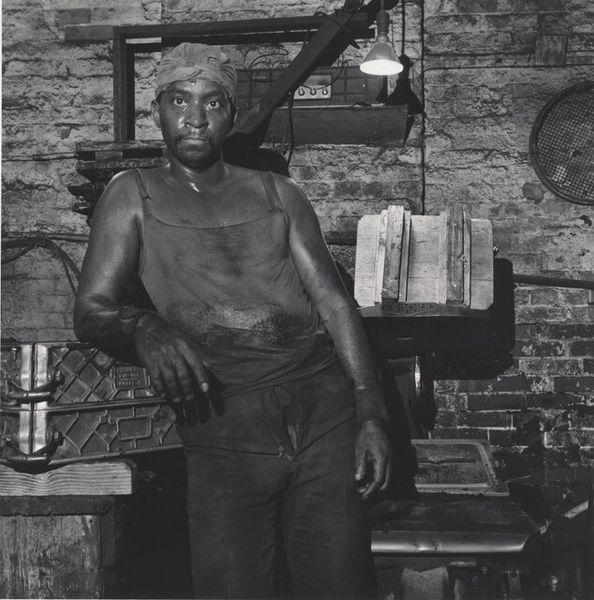
Dimensions: image: 17.6 x 17 cm (6 15/16 x 6 11/16 in.) sheet: 25.2 x 20.3 cm (9 15/16 x 8 in.)
Copyright: National Gallery of Art: CC0 1.0
Editor: So here we have Milton Rogovin’s 1978 gelatin-silver print, "Retiree, Atlas Steel Casting" from his "Working People series." It's a pretty straightforward portrait, and the man looks exhausted. What stands out to you? Curator: It's a powerful image precisely because of its apparent simplicity. Rogovin’s work serves as a vital document of a specific time and place, offering a glimpse into the lives of working-class Americans and forcing a consideration of the dignity often denied. I see here a powerful visual statement about labor, class, and aging in industrial America, but the most striking part is how his class intersects his identity as a working man. How does it challenge our assumptions about work, class, and the value we place on laborers? Editor: I hadn’t considered that so explicitly. I mean, I noticed the visual cues, like the welding mask pushed up and the grimy clothing. Is he intentionally commenting on something political? Curator: Absolutely. Rogovin’s practice aligns with the social-realist movement. He was consciously giving visibility to those often rendered invisible by mainstream society. Look closely. How does Rogovin use light and shadow to convey not only the literal dirt of the labor, but also, perhaps, the psychological weight of it? His face is not only tired, but hardened. He spent decades creating portraits like this in working class settings. What does that sustained focus tell us? Editor: That it was about more than just taking photos; it was a dedicated focus on specific people. It's about respecting their experiences. I suppose he's urging us to think about the cost of progress, right? Curator: Precisely! It's not simply a study of individuals but also a commentary on the human cost of industrialization and the systems that exploit labor. It serves as a prompt to ask what’s changed and what remains the same for the working class. Editor: Okay, that adds so much depth for me. I see now how Rogovin is turning the personal into the political. I thought the image was 'simple' at first glance, but now realize that was naive of me. Thanks! Curator: Agreed! Seeing how an artist like Rogovin compels the viewer to face some very discomforting truths can allow us a unique vantage point, revealing hidden stories in plain sight.
Comments
No comments
Be the first to comment and join the conversation on the ultimate creative platform.
